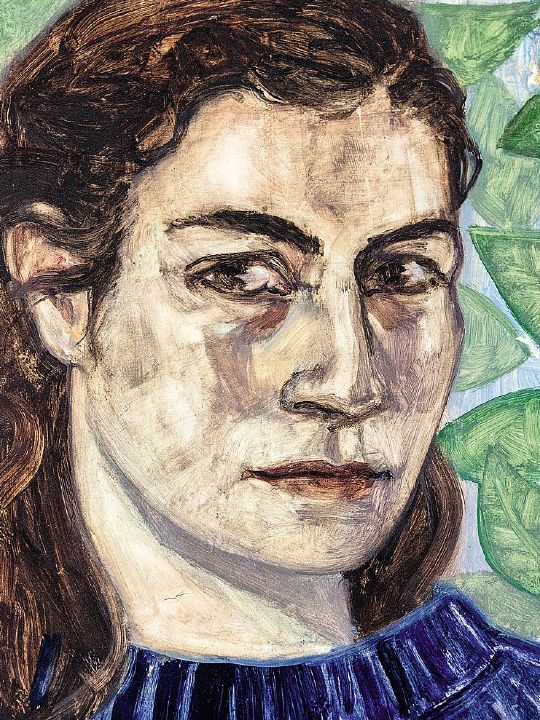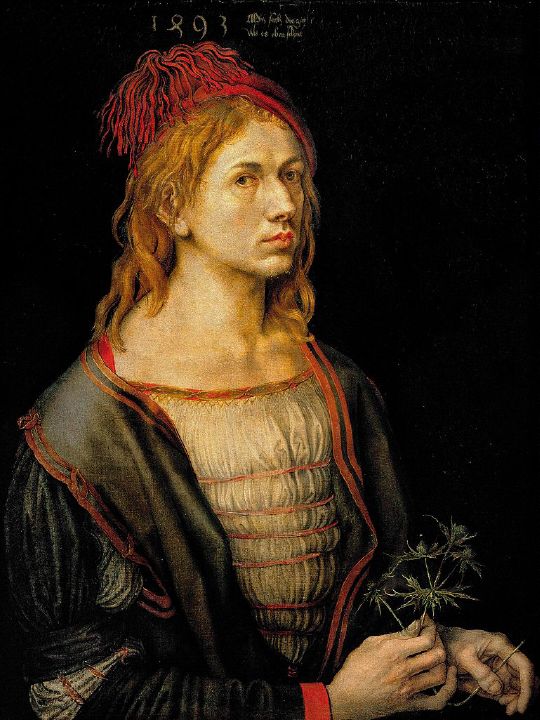
One of the very first independent self-portraits in Western painting was by Albrecht Dürer (1471-1528), who, at 22, depicted himself in all his glory. Did he envision the impact he would have, ushering in the German Renaissance? Written in gothic letters, above him: “My affairs follow the course allotted to them on high.” With humility and faith, the young painter set out to meet his fate, his ambition, and let it be said, his challenge to history. In an entirely self-fulfilling prophecy, the artist shows us his legitimacy by way of the pictorial act. In 1524, with the recent deaths of Raphaël and Leonardo da Vinci and success of Titian, the young Parmigianino (1503-1540) distinguished himself from those imposing figures through innovation, portraying himself at 21 in a very sophisticated composition. He painted his reflection with all the curvilinear deformations that arise from looking into the domed surface of a convex mirror.
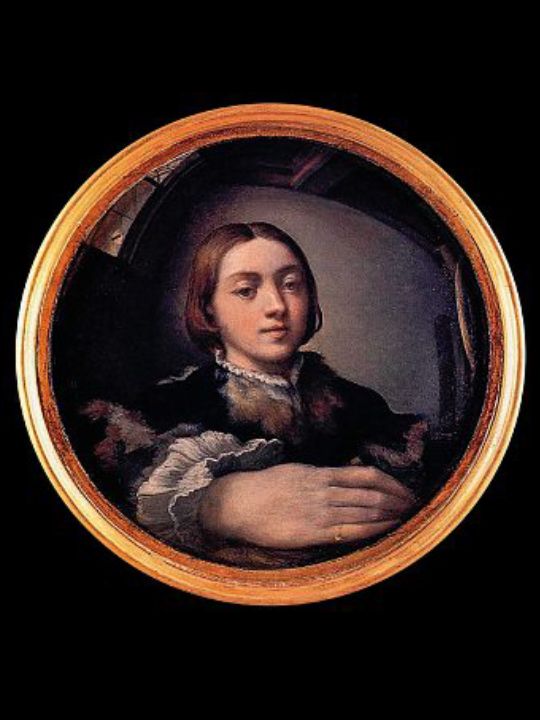
The play of unfamiliar proportions relative to distance, the contrast of fabrics on his jacket, right up to the sensuality of light as it glides over the wall in the background, Parmigianino shows his mastery of artifice through an excess that came to define mannerism. And the genius of this courtier was that he condensed this miracle of evidence on a surface which is not even 25cm in diameter.
Depiction of strength and confidence
Since the painter’s status post-Renaissance became much more recognizable, Van Dyck (1599-1641) presented himself to the world as a man of the court, at 22. He demonstrated a strength and confidence that recalls the vitality of his master Pierre Paul Rubens, who wrote of himself: “My talent is such that no enterprise, however vast in number and in diversity of subjects, has surpassed my courage.” The painting is thus a form of self-promotion of the artist’s very image, and also proof of his skills as a portraitist. Faced with the painter and his self-portrait, a potential sponsor could not help but recognize his talents.
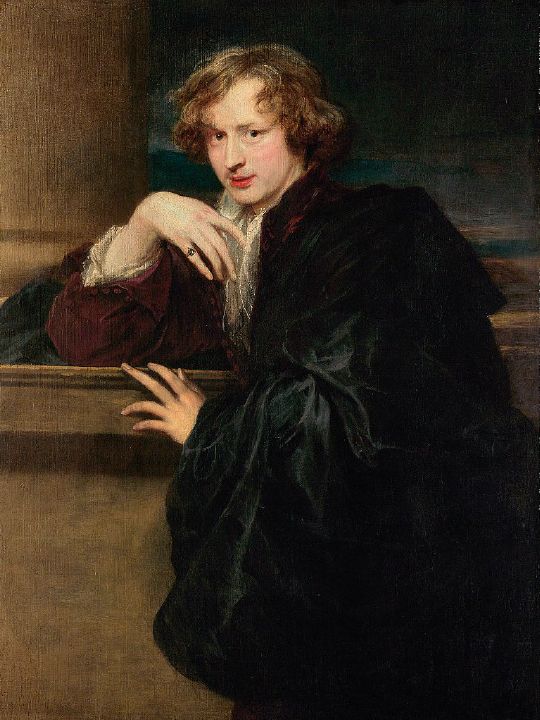
It was with much more human uncertainty that Rembrandt (1606-1669) painted himself at 23. The evolution of his art following the rhythm of his advancing years, hundreds of his self-portraits constitute one of the most touching series in all of Western painting.
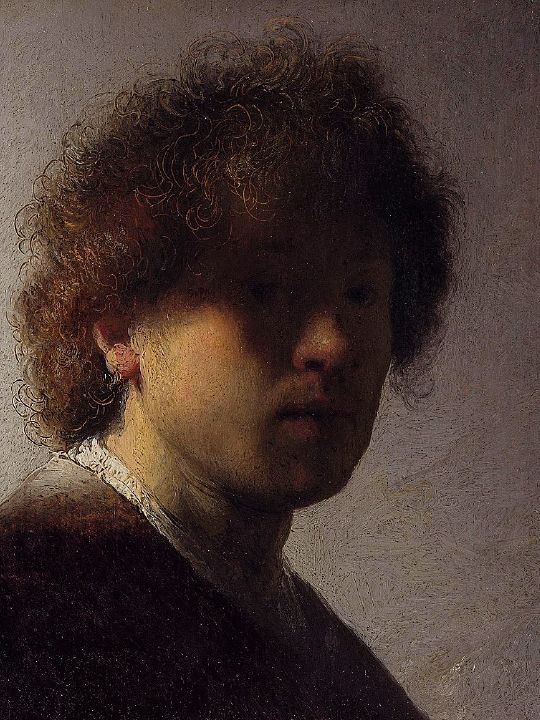
The chiaroscuro, the use of impasto, a warmth, everything is already there. In a classical way, Rembrandt renders the shadows very lightly and the highlights more robustly, while the light background here is perhaps too heavy-handed. He also used the end of his brush to render the curls of hair, etching lines in the paint and revealing the original red background of the small oak panel. Maybe this was a sign of his future career as a master engraver. If there is one other painter who would depict himself frenetically, it is Pablo Picasso (1881-1973). In 1900, the son of a painting teacher in Barcelona, drew quickly and well. Apart from the passion of his lines and his efficient use of the medium, there are very few elements employed for such a photographic rendering, suggesting the originality of the painter. He quickly killed off his father, symbolically speaking, exploding the classical codes of figurative art assimilated in his childhood.
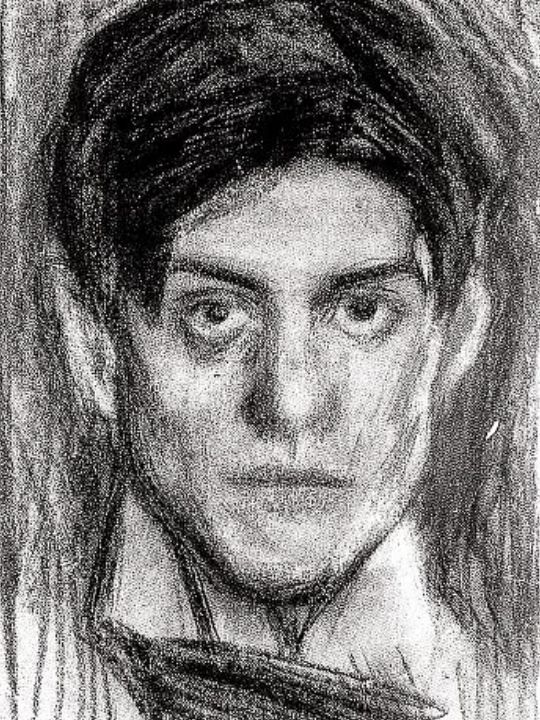
At 21, Otto Dix (1891-1969), a student at the School of Applied Arts in Dresden during the infancy of modernity, dabbled in Cubism, Futurism and Dadaism. The cultivated beginner also painted himself in a style that evokes the self-portrait of Dürer. There is something a little pretentious and arrogant here, bordering on pathetic. Yet, this perhaps more classical voice, surely riskier, foreshadowed New Objectivity, a style that would make him world-renowned in ten years.
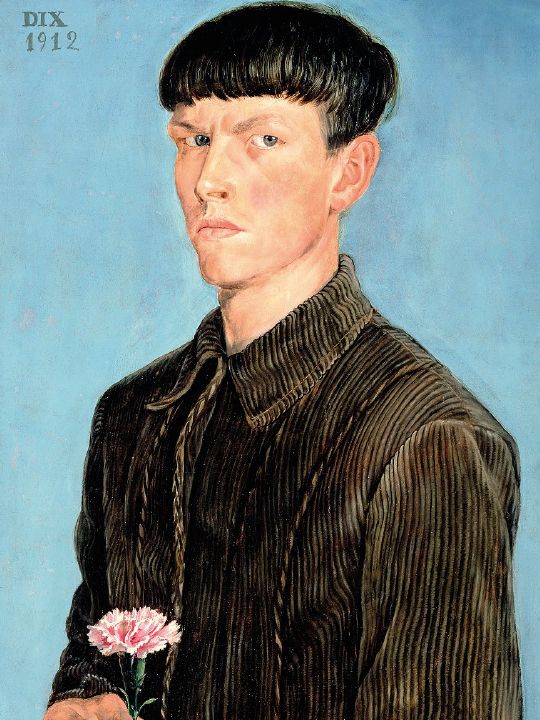
Rendez vous with selfhood
Frida Kahlo (1907-1954), was a gifted student, destined to become a medical doctor. On 17 September 1925, her life was changed forever after the young woman was literally gutted in a streetcar accident. “That is how I lost my virginity”, she later wrote. She was left with eleven fractures, a broken spinal column and pelvis, a crushed right foot and a permanently dislocated left shoulder. Bedridden and wearing an iron corset, she painted her first self-portrait at 19, as a gift to Alejandro Gómez Arias, her first love, who left her after the accident. Despite a certain awkwardness, the elements of her art are all there: self-portrait in a frontal pose with unibrow, suggestive naiveté, and patterns in the background evoking her state of mind. We can detect the birth of her signature style, just as one envisions the face of an adult from a baby photo. In the great game that is painting, Nathanaëlle Herbelin (1989), a contemporary painter of Israeli origin, enters with courage and humility at the age of 29. In her self-portrait, we find the encounter with oneself and a certain malaise that blends perfectly with the challenges of painting. A secret confidence also, while the means are still fragile. As Donald Judd said in 1984: “The presence of good artists is exceedingly given by themselves; it’s the ultimate, obdurate fact.”
